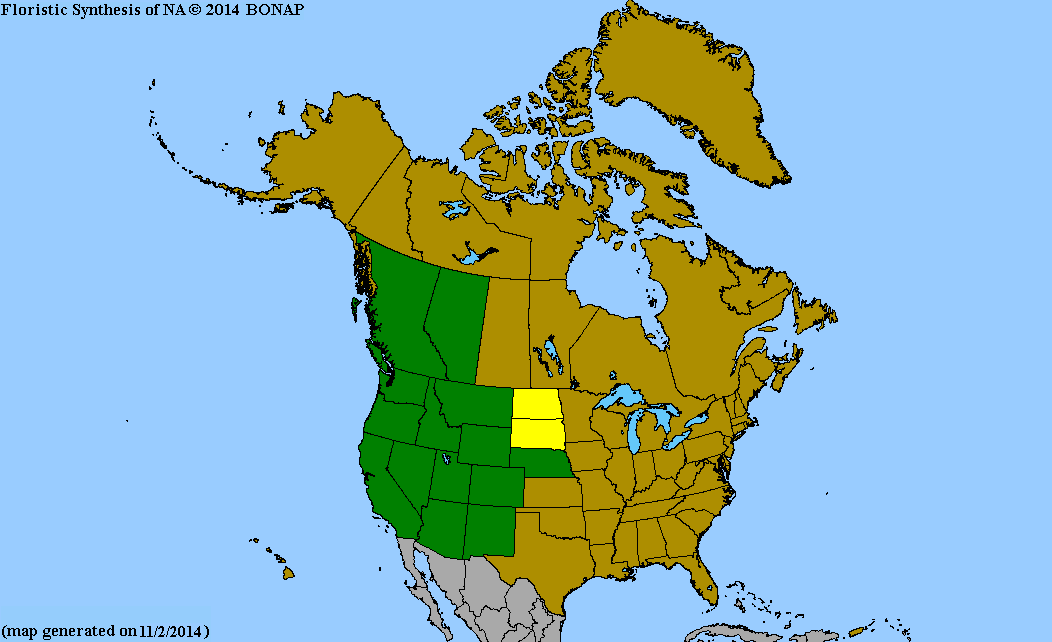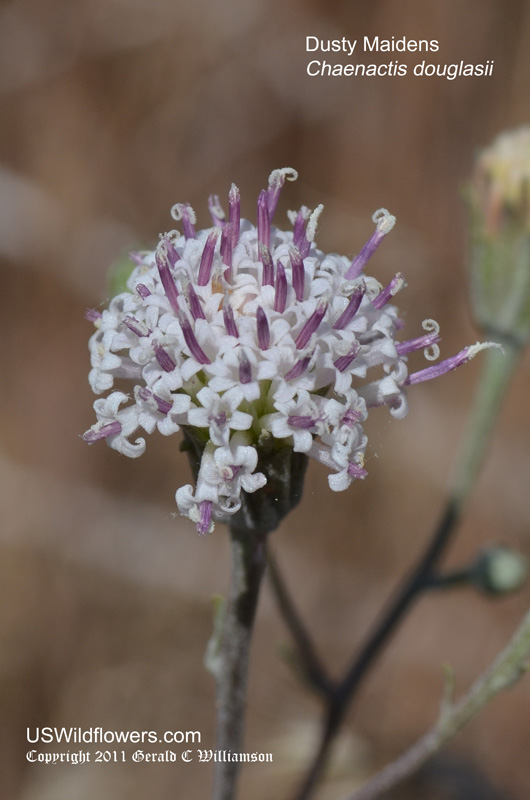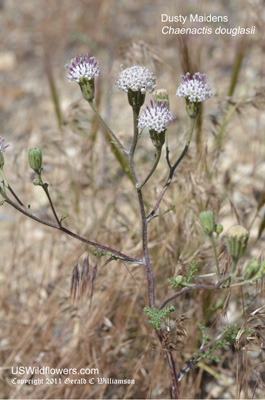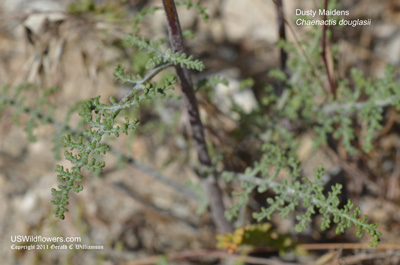Dusty Maidens, Douglas' Dustymaiden, Chaenactis, Douglas False Yarrow - Chaenactis douglasii
|
Chaenactis douglasii - Dusty Maidens, Douglas' Dustymaiden, Chaenactis, Douglas False Yarrow. This is a member of the Asteraceae family which has no ray flowers, growing in the western part of the United States and Canada.
Medicinal: According to the Malheur Agricultural Experiment Station, Oregon State University: "Infusion of the plant is used as a wash for chapped hands, insect bites, boils, tumors, and swellings by the Okanagon, and Thompson. A strong decoction of the plants were applied to snakebites by the Thompson, Okanagon, and Paiute"
Found in:
AZ, CA, CO, ID, MT, ND, NM, NV, OR, SD, UT, WA, WY
Leave comments on Chaenactis douglasii at this link. | 
Distribution of Chaenactis douglasii in the United States and Canada:

Map courtesy of The Biota of North America Program.
Map color key
Search Our Database: Enter any portion of the Scientific, Common Name, or both.
Do a general Google search of the entire site:
#ad
 Follow USWildflowers on Twitter
| | Site: Snake River Birds of Prey National Conservation Area, Ada County, ID Date: 2011-June-15 | Photographer: Gerald C Williamson
Nikon D7000
Tamron SP 90MM f/2.8 AF Macro | | The white to pink blossoms of Dusty Maidens are rayless with protruding, forked styles which help identify this as a member of Asteraceae. | | 
| | Site: Snake River Birds of Prey National Conservation Area, Ada County, ID Date: 2011-June-15 | Photographer: Gerald C Williamson
Nikon D7000
Tamron SP 90MM f/2.8 AF Macro | | Dusty Maidens may be up to 24" tall, with a branching inflorescence. The peduncle (flower stem) and involucre are quite hairy, but the hairs may be pressed against the stem. The hairs also thin out with age. | | Click on the photo for a larger image

| | Site: Snake River Birds of Prey National Conservation Area, Ada County, ID Date: 2011-June-15 | Photographer: Gerald C Williamson
Nikon D7000
Tamron SP 90MM f/2.8 AF Macro | | The leaves are bipinnately lobes, appearing quite intricately cut. The leaves, along with the rest of the plant, are quite hairy, although this thins out with age (apparently not just a human trait.) | | Click on the photo for a larger image

|
References used for identification and information:
|
|
| |
| #ad
|
|





